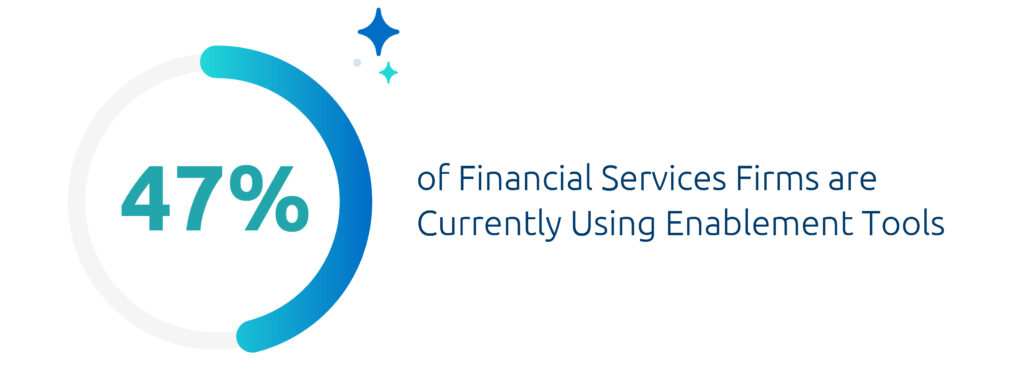The financial services industry continues to undergo a major digital evolution as client expectations around technology and the client experience change, and competition intensifies.
Especially in challenging times – as we are experiencing now in the banking sector – client-facing teams need a single source of truth for training, campaigns, and content, and firms need an enablement platform that can help drive consistent, up-to-date messaging across their organizations. Financial services firms need to be able to organize and quickly pivot around new strategic initiatives and plans such as mergers and acquisitions, reorganizations, and other changes to corporate structures.
To better understand what to expect in enablement, and where the industry is heading, check out the State of Sales Enablement in Financial Services, a research study conducted by Sales Enablement PRO.
Key Themes
Last year was, by all measures, a challenging year for financial services, with high inflation, extreme volatility, a war in Ukraine, and a crash in the crypto market, and this year is proving just as turbulent so far. In 2022, financial services technology buyers continued to focus on stability and resilience to enhance their technology ecosystems. Reliable performance, scalability, and robust systems were also key concerns – and these criteria continue to be important for financial services firms evaluating and selecting partners to build out their tech stack.
With that as a backdrop, we’re seeing some common themes in 2023.
Expect the Unexpected
The macro environment continues to evolve but is expected to remain highly volatile and unpredictable as news of the rescue of Silicon Valley Bank has ripple effects on the financial markets and economy.
Many of the same technology themes from 2022 remain as financial services firms continue on their digital transformation journeys accelerated by the Covid-19 lockdowns. While organizations are at very different junctures in their journeys, most are laser-focused on meeting their clients’ heightened expectations for improved digital experiences and cutting-edge communications while still controlling risk and managing information security.
The Evolution of Sales Enablement
While it’s a relatively newer function in financial services, growth in enablement platforms – as a crucial part of the industry’s technology stack – is expected to continue as more and more companies develop well thought out, formal approaches to productivity, sales, and revenue generation.
In the State of Sales Enablement in Financial Services report, 47% of respondents to a global survey noted they are already leveraging an enablement platform. While this is a significant number, there’s still room for growth compared to the 63% of firms in other industries that currently use a sales enablement platform.

According to the report, enablement tools help firms better analyze financial professionals’ progress, including how they engage with clients and where enablement can provide support. The report notes that organizations that use these tools are “eight times more likely to have highly engaged reps and four times more likely to provide insights into what works.”
Looking Ahead
Going forward, the financial services sector is likely to continue to focus on those solutions and platforms that will best support their strategic goals and top pain points. Focusing on an enhanced experience will help these firms differentiate themselves in an increasingly crowded market. At the same time, a more deliberate approach to enabling a firm’s strategic initiatives and meeting revenue goals is rapidly becoming table stakes.
The State of Sales Enablement in Financial Services report surveyed financial professionals across the globe to understand what sales enablement looks like at their organizations and how it is impacting their businesses. The report takes a closer look at insights from roughly 100 professionals across accounting, banking, insurance and investment management.




